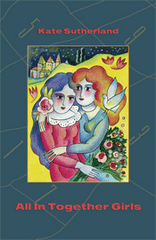I enjoyed Jane Smiley’s campus satire, Moo, but ultimately I was not dazzled by it. Of course there’s no reason why I should be dazzled by any particular book, but this was my first exposure to Smiley’s work and I’m aware of her Pulitzer Prize winning status, so I guess I was hoping.
The structure of the novel is, I think, at once its greatest strength and its fatal flaw. It is composed of several intertwining stories told from the vantage points of different campus actors. These stories are set out in short instalments interspersed with one another. Thus we get a couple of years in the life of the university from these various perspectives: that of the provost, the provost’s secretary, the chief fund raiser, a millionaire donor, a cafeteria worker, a handful of first year students sharing a dormitory, the renegade Marxist chairman of the horticulture department, the media-darling, right-wing economics professor, the untenured creative writing professor, and one of the creative writing students. This is only a partial list; there are more, many more.
The breadth built into this structure provides an unusually complete view of the workings of campus life. This isn’t the university offered up in microcosm through one department (usually the English department) as is standard in campus novels. This is the university as the sprawling, diverse, often at odds with itself, entity that, in my experience, it generally is.
The effect of Smiley’s structure is to give on one level an aerial view of the university as a whole, but on another to zoom in for close-ups of the component parts in the instalments devoted to individual characters. The characters are drawn in marvellous detail in these close-ups such that any one of them could have served as the main character in a novel of their own. The writing is tremendously engaging and several of the instalments work on their own as brilliant set pieces.
The problem with the structure is that no matter how engaged I was with each of the characters while reading their respective instalments, so much occurred in the space in between (taken up by the instalments of the stories of the other characters) that by the time they rolled around again I’d nearly forgotten who they were. Thus by the halfway point, and for the remainder of the novel, I felt distracted and a bit irritable. No main character emerged to serve as a focus and there was only a vague thread of a plot to hold it all together. I suppose the point was for the university itself to serve as the main character, but because the picture of the university that accumulated throughout the novel was of a fundamentally uncohesive unit, it wasn’t fit for the role.
Reading Moo was a bit like trying to cobble together a meal from appetizers. No matter how delicious each dish is, and regardless of the fact that together they add up to enough calories for a main meal, you leave the table feeling unsatisfied. In the end, though the novel has a great deal to recommend it, it never quite came together for me.
Subscribe to:
Post Comments (Atom)

1 comment:
I have to say, Kate, that I felt exactly the same thing with Moo. It was all excellent on a paragraph by paragraph basis, but I didn't feel as compelled by it as I'd hoped to. I enjoyed A Thousand Acres a great deal more.
Post a Comment